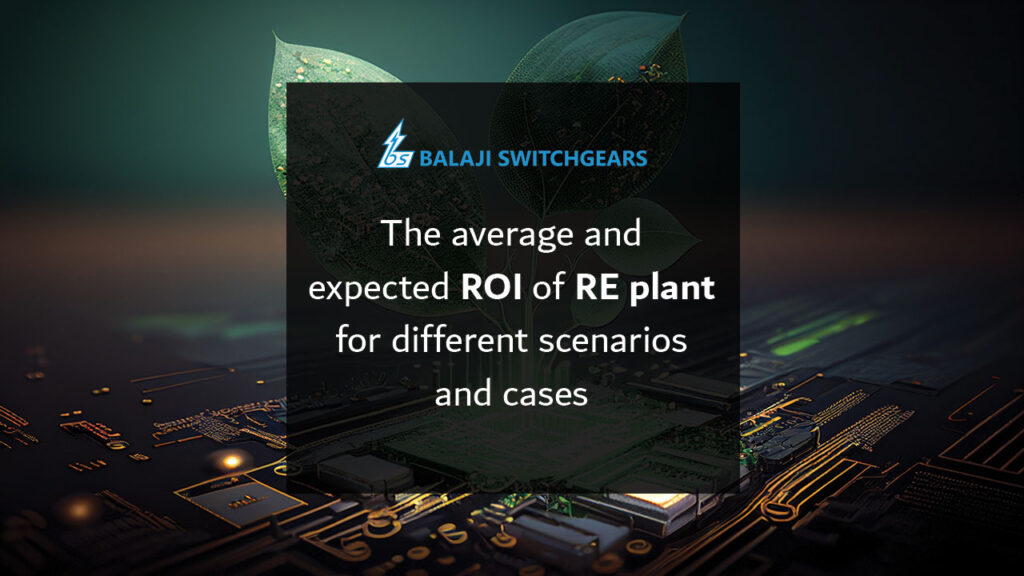The transition to renewable energy (RE) is not just an environmental imperative but also an economic opportunity. Investors and policymakers are increasingly interested in the financial returns from RE plants, which include solar, wind, hydro, and bioenergy sources. The average and expected Return on Investment (ROI) for these plants can vary significantly based on several factors, including technology, location, policy, and market conditions.
The Basics of ROI in Renewable Energy
The ROI for RE plants is a measure of the profitability of investments in renewable energy sources such as solar, wind, hydro, and biomass. It’s calculated by considering the initial investment costs, operational costs, revenue generated, and any incentives or subsidies provided by governments.
Global Trends and Expectations
In 2023, the renewable sector saw a record increase in capacity additions, with a nearly 50% jump to about 510 gigawatts (GW), led by China’s remarkable solar PV market growth. This surge is part of a broader trend towards decarbonizing the power sector, with the International Energy Agency (IEA) setting a goal to triple global renewable capacity by 2030 as part of its Net Zero Emissions Scenario.

Factors Affecting ROI
Several key factors can influence the ROI of RE plants:
Technology: Advances in technology can lead to more efficient energy production, thus improving ROI.
Location: Geographical factors such as sunlight intensity or wind patterns significantly impact the energy output of RE plants.
Policy Support: Government policies, subsidies, and incentives can make RE investments more lucrative.
Market Conditions: Fluctuations in energy prices and demand play a crucial role in determining ROI.
Scenario Analysis
Let’s consider a few hypothetical scenarios to understand how they might impact the ROI of RE plants:
Scenario 1: High Subsidy Environment: In countries with strong policy support for renewables, such as tax breaks or feed-in tariffs, the ROI can be significantly higher.
Scenario 2: Technological Breakthrough: The development of more efficient solar panels or wind turbines can reduce costs and increase energy output, boosting ROI.
Scenario 3: Market Volatility: In a scenario where fossil fuel prices are highly volatile, RE plants can offer a more stable and potentially higher ROI.
Case Studies
India: With its ambitious targets for renewable energy, India presents a case where ROI is bolstered by government support and a rapidly growing market for clean energy.
Germany: As a leader in the transition to renewable energy, Germany’s well-established infrastructure and policies have resulted in a stable and attractive ROI for investors.

ROI in Developed vs. Emerging Markets
The Energy Return on Investment (EROI) is a key metric used to assess the efficiency and economic viability of energy-producing systems. An EROI of about 7 is considered the break-even point for developed countries, while the US average across all generating technologies is about 40. However, in emerging and developing economies, the financial mechanisms, policy support, and grid infrastructure may differ, affecting the overall ROI.
India’s Renewable Roadmap
India, as a developing nation with ambitious RE targets, presents a unique case. The country’s roadmap to 2030 outlines the challenges and opportunities in the RE sector, including policy recommendations and investment strategies. Addressing issues like policy uncertainties, grid infrastructure, and financing can significantly impact the ROI of RE projects in India.
The Financial Calculus of RE Investments
Investors consider the total return and annualized volatility over different periods to gauge the attractiveness of RE investments. While specific ROI figures for RE plants vary, the overarching trend is positive, with renewable energy increasingly seen as a sound investment with competitive returns.
Conclusion
The ROI of RE plants is influenced by a complex interplay of factors. While the global push for renewables is strong, individual scenarios can lead to different financial outcomes. By understanding these nuances, stakeholders can make informed decisions that balance economic returns with sustainable practices.

